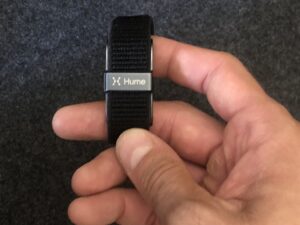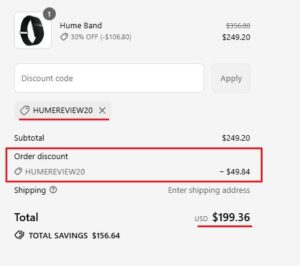When people search for Hume Band vs Whoop, they want one thing: clarity. Both wearables promise to improve health, performance, and recovery, but they work in very different ways.
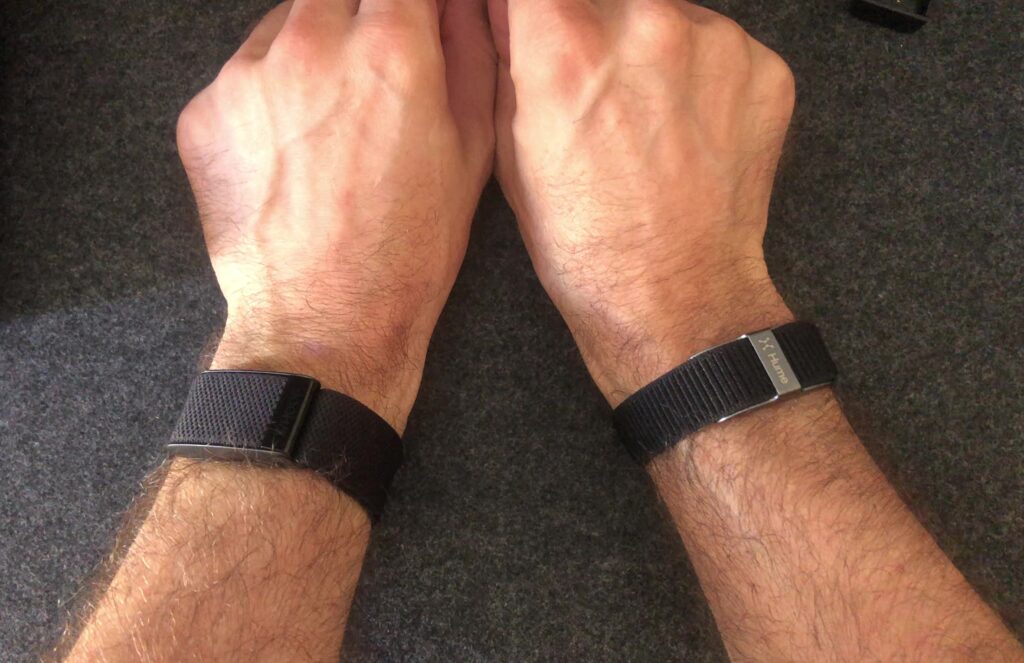
Whoop has been on the market for years, building a reputation with athletes for its detailed strain and recovery scores. It tracks everything from heart rate variability to sleep cycles, but locks most of its features behind a monthly subscription.
Hume Band is the challenger. Instead of flooding users with endless charts, it simplifies health into three powerful metrics: Metabolic Capacity, Metabolic Momentum, and Recovery. Backed by clinical-grade accuracy, it is designed for anyone who wants actionable insights without paying subscription fees. Check the full Hume Band review here.
As a health professional, former athlete, and wearable tester, I put both devices to the test. This guide gives you the full Hume Band vs Whoop comparison, including price, features, accuracy, and real-world usability, so you know which one is right for you.
Quick Verdict Hume Band vs Whoop — The Clear Winner
After a month of testing both devices, the results are clear: Hume Band outperforms in comfort, simplicity, and data transparency. No subscriptions, no locked data — just clear health insights that help you improve daily.
Want to skip straight to the winner? Use the coupon code HUMEREVIEW20 to get your Hume Band for $199 instead of $249. Keep scrolling to see the full Hume Band vs Whoop comparison.
👉 Get the Hume Band NowHume Band vs Whoop: Quick Comparison
Use this Hume Band vs Whoop comparison table to see pricing, battery life, metrics, and subscription details at a glance.
| Device |
Hume Band
|
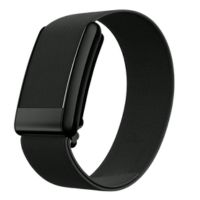
Whoop
|
Winner |
|---|---|---|---|
| Pricing model | One-time purchase $199–$249. Optional Premium add-on $8.99/month for AI coaching. | Membership required. Plans from $199 to $359 per year. | Hume Band for total ownership without mandatory fees. |
| 5-year cost scenarios | Base cost $249 to $352 depending on offer. $199 with coupon. | From $995 to $1,795 depending on plan. | Hume Band is cheaper in every scenario because membership is optional. |
| Core metrics focus | Metabolic Capacity, Metabolic Momentum, Recovery. | Strain, Recovery, Sleep insights with journal and habit tracking. | Depends on user: Hume for metabolic clarity; Whoop for training load detail. |
| Raw vitals tracked | HR, HRV, SpO₂, respiratory rate, sleep stages, skin temperature. | HRV, resting HR, respiratory rate, skin temperature, SpO₂. | Tie on vitals captured. |
| Battery life | Up to 5–7 days per charge. Typical full charge 30–80 minutes. | Up to 14+ days per charge. | Whoop for longer runtime. |
| Water resistance | IP68 dustproof and water resistant to 10 m for up to 2 hours. | IP68 water resistance rated to 10 m. | Tie on water protection. |
| Sensors and optics | 5 LEDs and 4 photodiodes. | Multisensor package with skin temperature and SpO₂ on 5.0. | Both cover comparable vitals. |
| App and integrations | Free app for core metrics. Premium unlocks AI coaching (iOS 14+ / Android 8+). | App requires membership. Coaching, journal, and advanced integrations. | Whoop for seasoned ecosystem; Hume for zero-fee simplicity. |
Hume Band vs Whoop: How I Tested The Wearables
To make this comparison fair, I wore both devices — the Hume Band and the Whoop — at the same time for a full month.
I used them day and night, during workouts, recovery days, and even while sleeping.

My goal wasn’t to run a lab test but to see how each tracker performs in real life: comfort, battery, sleep tracking accuracy, data clarity, and how easy it is to actually use the insights.
This hands-on, side-by-side approach helped me understand what really matters when choosing between the two — not just the specs, but how they fit into your daily habits and lifestyle.
By the end of the month, the differences were clear — one felt like a constant companion guiding my health decisions, the other like a pro athlete’s data machine that demands more attention.
Hume Band vs Whoop: Design and Comfort
When it comes to design and comfort, both devices take very different approaches — and your daily experience depends on it.
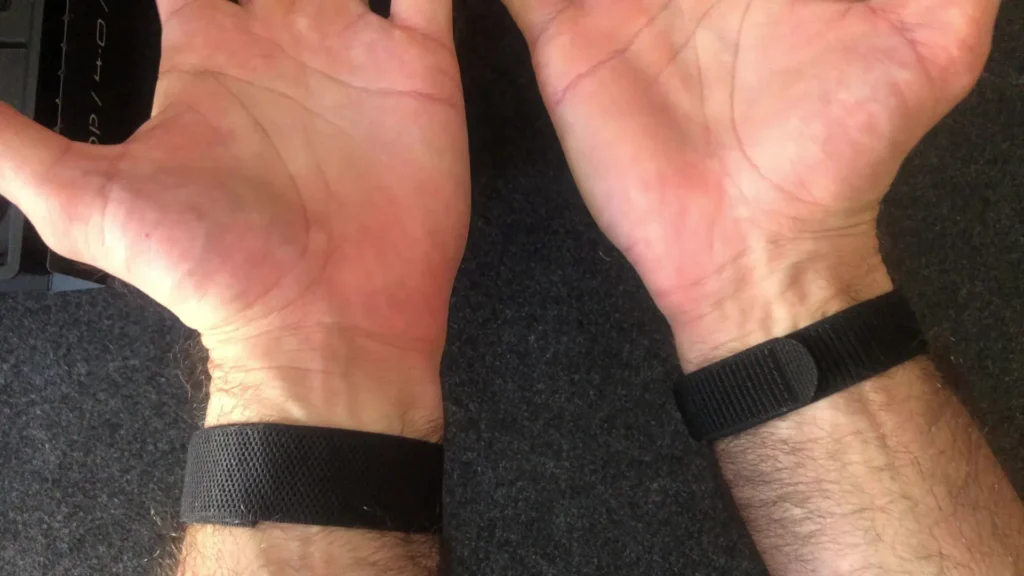
The Hume Band feels lightweight and minimal from the first moment you put it on.
It takes a few seconds to fit the bracelet into the buckle — a small learning curve at first — but once it’s secured, it stays perfectly in place.
Adjusting the size is quick, and taking it on and off becomes effortless after a day or two.
The material feels soft and breathable, and after a few hours, you genuinely forget you’re wearing anything on your wrist.
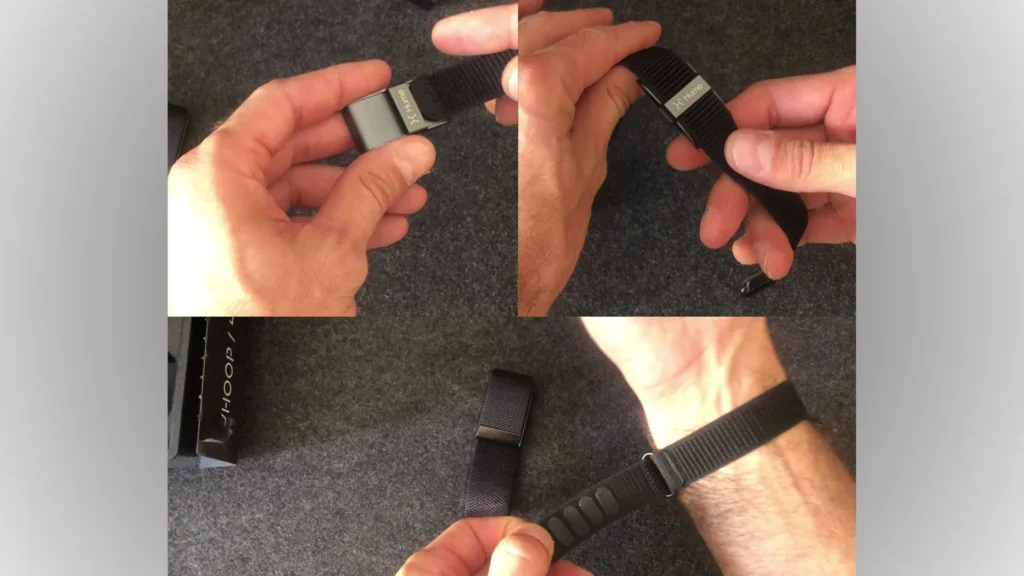
There’s only one small tip I’d give from experience: if you’re doing water sports, tighten it slightly.
I’ve used it while swimming, surfing, in strong waves, and even wakeboarding — and it performs well as long as the strap is snug.
It takes just a second to adjust, and then it doesn’t move an inch.
The Whoop, on the other hand, didn’t offer the same comfort — at least for me.
The default band felt rougher on the skin, especially during the summer when heat and sweat made it slightly scratchy.
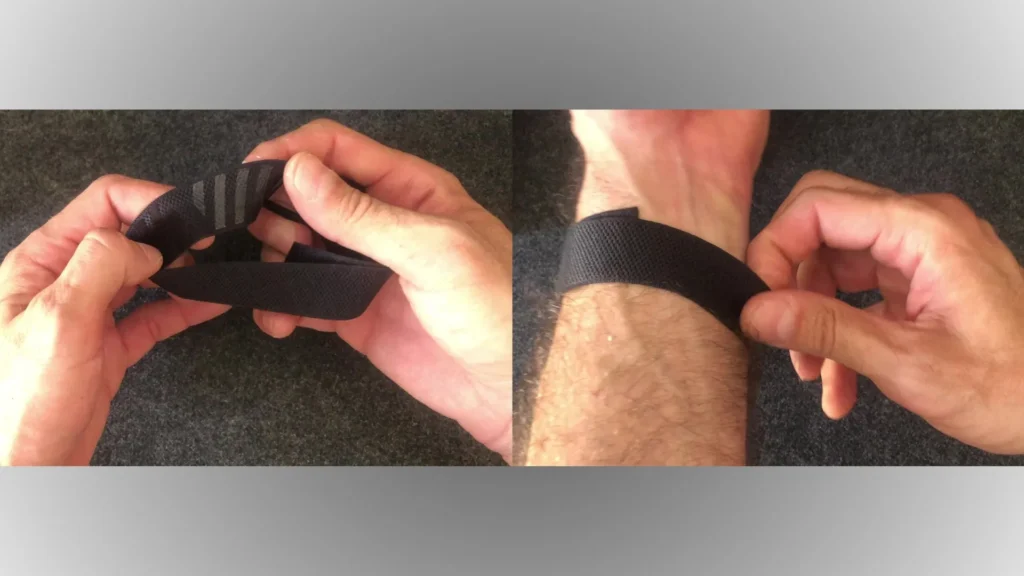
After showers, I had to remove it to let it dry properly, and at night it sometimes became distracting.
For a wearable that’s meant to be worn 24/7 to track your recovery and sleep, this lack of comfort is a drawback.
If a health tracker disrupts your rest, it’s already missing part of its mission.
Verdict: Hume Band Wins for Comfort
In daily use, the Hume Band feels far more natural and adaptable.
Its minimalist strap and featherlight build make it disappear on your wrist — exactly what you want from a wearable you’ll live with.
The Whoop might look sportier, but comfort-wise, the Hume Band is the clear winner.
We’ve put together a quick guide that shows exactly how to use your Hume Band discount code the right way — step by step. 👉 Read the Coupon Guide & Save More
Hume Band vs Whoop: Battery Life and Charging
One critical aspect of this Hume Band vs Whoop article is the battery life. One of those features you only really appreciate once you’ve had to deal with a tracker that dies too often.
In this category, the Whoop comes out ahead.
The Whoop claims up to 14 days of battery life, and while I never quite reached that number, I could easily go 5 to 6 days between charges.
Its on-wrist charging system is also a clever idea — you just slide a small battery pack onto the strap so you don’t have to take it off.
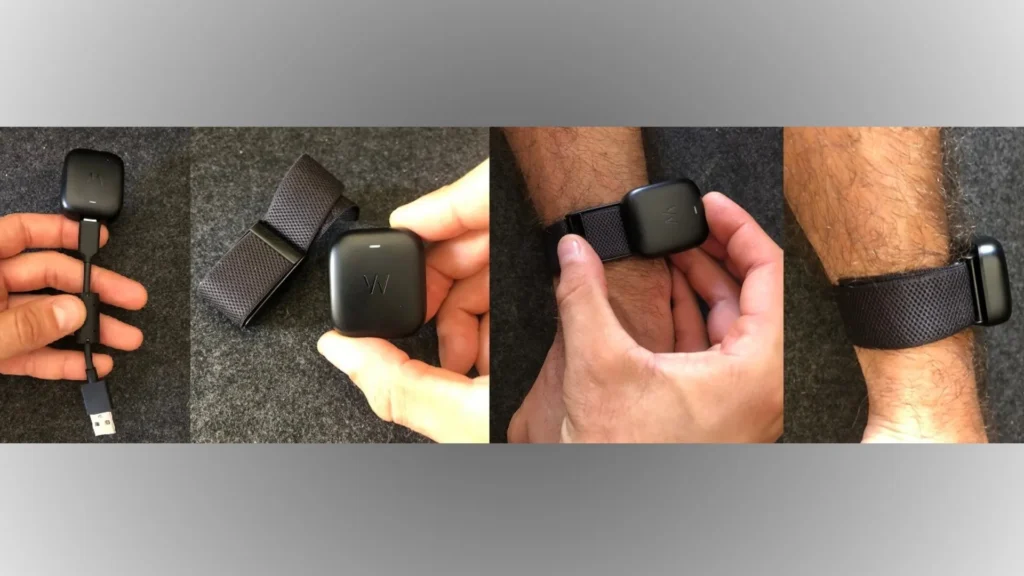
That said, the connection isn’t perfect.
It’s a bit tricky to align properly, and a few times the charger went flying across the room when I tried to remove it too fast.
Still, it’s a nice feature when you get used to it, especially if you want uninterrupted tracking.
The Hume Band, on the other hand, is much simpler.
It offers around 7 days of battery life and takes roughly one hour for a full charge.
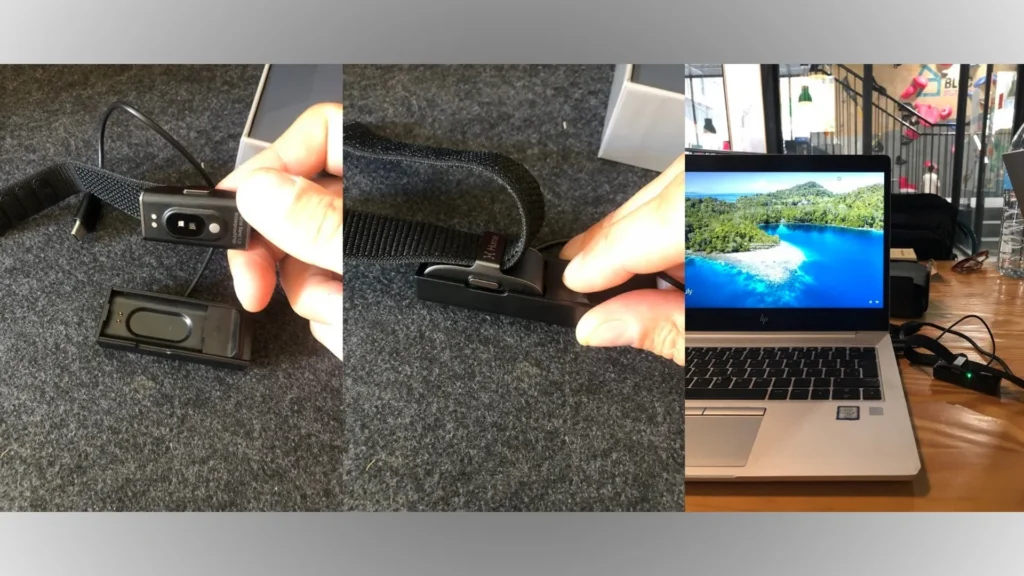
In my routine, I usually just plug it into my computer for 20 minutes every three days while checking my emails in the morning — and that’s enough to keep it going.
No bulky add-ons, no weird connectors — just a clean, magnetic charger that snaps right into place.
Verdict: Whoop Wins on Battery, But Hume Wins on Simplicity
If you want the longest possible battery span, Whoop takes the point.
But when it comes to everyday convenience, the Hume Band feels more seamless.
Its charging routine blends naturally into your day, and you never have to think about attachments or cable gymnastics.
For most users, it comes down to preference:
Whoop wins the endurance test, but the Hume Band wins on effortless usability.
Hume Band vs Whoop: Health Tracking Accuracy & Data Experience
When you wear both the Hume Band and the Whoop at the same time, you quickly notice two very different design philosophies.
The Whoop wants to give you everything. Every possible metric — strain, recovery, sleep, HRV, skin temperature, stress, and more — is tracked, charted, and compared.
It’s powerful, but it can also feel overwhelming.
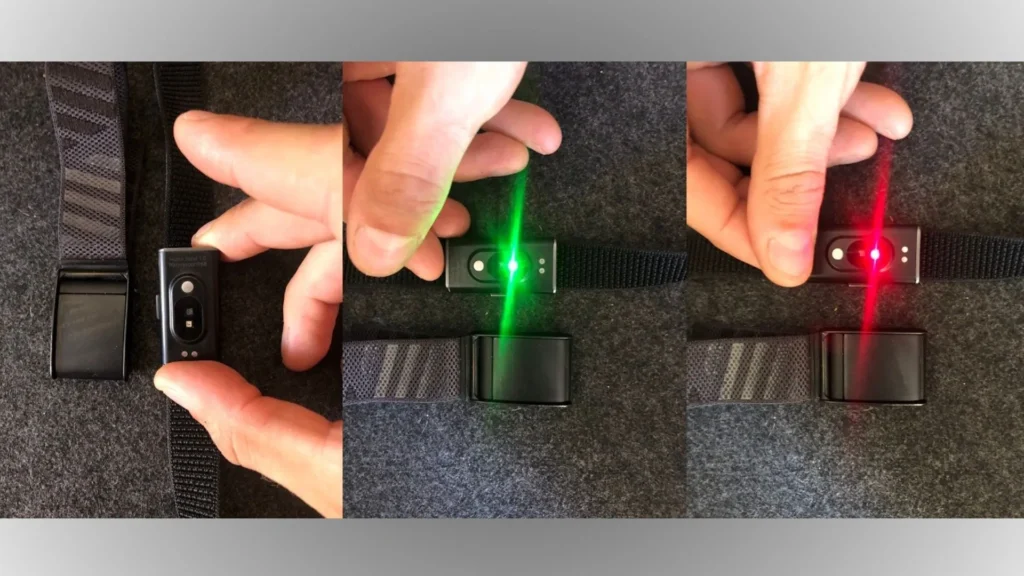
In my experience, I had the Hume Band on my left wrist and the Whoop on my right for several weeks.
The difference was striking: with Hume, I could open the app and immediately see what I needed — clear insights about recovery, metabolic capacity, and daily readiness.
With Whoop, I often found myself diving into submenus, graphs, and metrics I didn’t fully need.
The learning curve was long, and while I understand some users love this level of detail, for me, it was simply too much.
That’s where the Hume Band’s simplicity really shines.
You don’t need to spend time decoding data or cross-referencing multiple charts — you get actionable health insights, not data overload.
As a professional used to tracking recovery and performance, I value precision, but I also value clarity.
And clarity is exactly what Hume delivers.
The Whoop, to its credit, is a data powerhouse and gives room for customization.
But if you’re not a full-time data analyst or elite athlete obsessed with metrics, you might find it more confusing than helpful.
The Hume Band on the other hand is plug and play — you wear it, and it tells you what matters for your body, in real time.

It’s also important to note that Whoop recently received a warning from the FDA for making unverified claims about blood pressure tracking (source).
While that doesn’t affect its core features, it’s a reminder to focus on validated health metrics rather than marketing promises. We couldn’t write this complete Hume Band vs Whoop comparison without mentioning this important warning that everyone should know — for transparency’s sake.
While Whoop received an FDA warning for unapproved blood pressure claims, Hume Health is currently in the process of obtaining official approval for its own blood pressure monitoring feature. The release date hasn’t been officially announced yet, but it’s expected to be added to the Hume Band once regulatory approval is secured.
Verdict: Hume Band Wins for Simplicity and Clarity
If you want a wearable that gives you clean, science-based insights without needing to interpret endless graphs, the Hume Band is the clear winner.
It gives you what you need to improve your health, recovery, and longevity — without drowning you in data.
For users who prefer simplicity over complexity, this difference makes all the impact.
💰 Hume Band vs Whoop: Pricing and Subscriptions
This is where the real gap starts to show.
The Hume Band costs $249 once, or $199 if you use the coupon code HUMEREVIEW20. There’s also an optional premium membership at $8.99/month, which unlocks deeper AI insights and advanced reports — but it’s totally optional. I tried it for two months to understand how to read my data, then went back to the free version without losing the essentials.

On the other hand, the Whoop works on a subscription-only model. You don’t buy the device — you rent it through your membership. Prices vary depending on the country and billing plan, but they can go up to around €399 per year. Over five years, that means spending close to €2,000, compared to a single payment for the Hume Band.
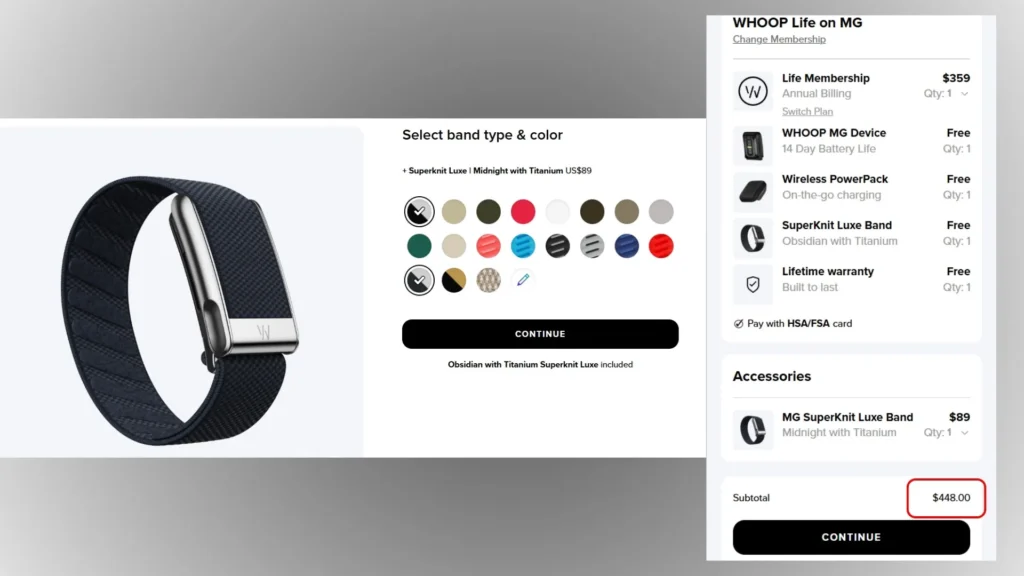
Now, to be fair, Whoop does include hardware upgrades and access to a massive user community, but this ongoing cost can quickly become a financial weight. If you ever forget to return the device after canceling, they’ll even charge you for the full year — which feels, let’s say, a bit aggressive.
✅ Verdict:
The Hume Band wins easily for long-term value. It gives you freedom — no forced commitment, no subscription trap, and full ownership from day one.
💡 Want to dive deeper into Hume Band pricing and subscription options?
Check out our complete Hume Band Review where we break down every detail — from one-time purchase options and premium features to how the discount code really works. It’s the full guide you need to make sure you get the best value for your money.
📱 Hume Band vs Whoop: App Experience & Insights
When it comes to the app experience, the contrast between Hume Band and Whoop is immediately noticeable.
The Whoop app is built for data enthusiasts. You get strain scores, recovery percentages, sleep stages, and a long list of metrics that can feel endless. It’s powerful, but also overwhelming. I often found myself scrolling through charts, trying to make sense of what really mattered — and that learning curve can be frustrating if you just want clear, actionable information about your health.
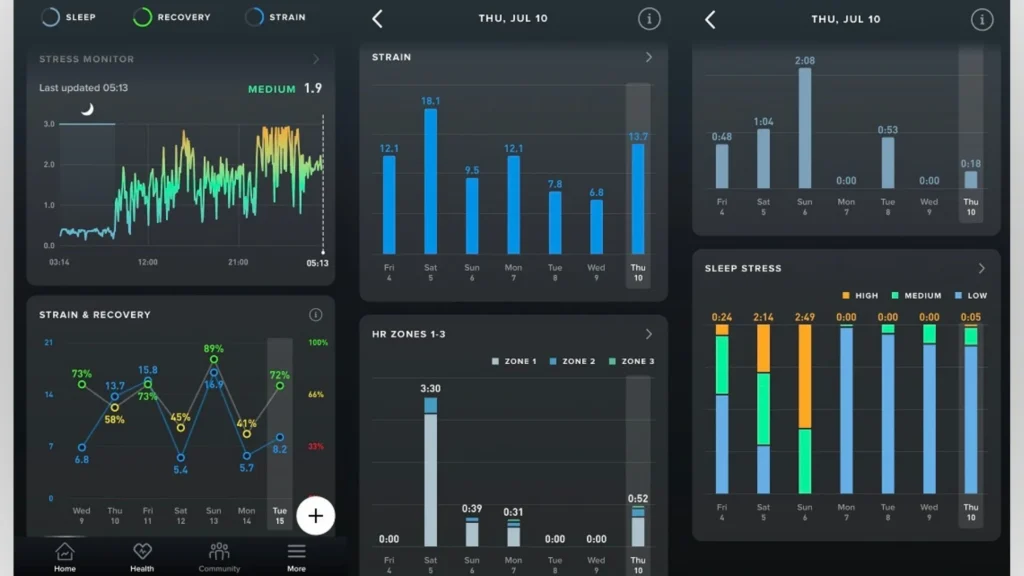
The Hume app, on the other hand, focuses on simplicity and meaning. It translates complex biometric data into three easy-to-understand metrics: Metabolic Capacity, Metabolic Momentum, and Recovery. Within seconds, you know if your body needs rest, movement, or recovery time — no graphs, no clutter, no guesswork.
👉 Check the Hume Band Onboarding Guide to make sure you’re getting the most out of the app and unlocking its full potential from day one.
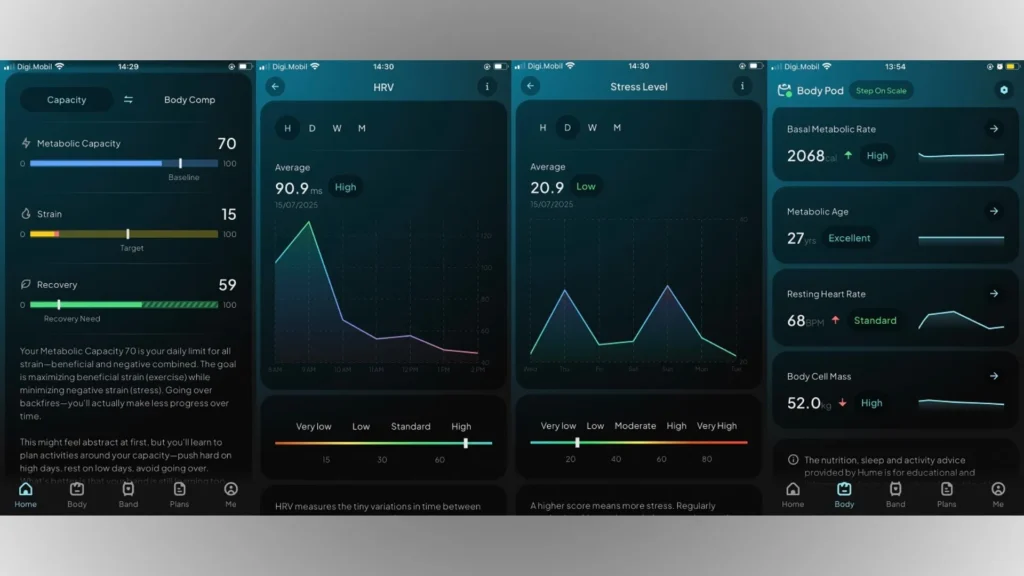
What’s even more exciting is that the Hume app is evolving fast. The team is actively rolling out updates, with new features and improved insights coming soon. And the best part? User feedback directly influences future updates. If there’s a feature you think should exist, you can suggest it right from the app — and the team actually listens.
That sense of collaboration makes Hume feel less like a company and more like a community that’s building the future of personal health together.
Verdict:
If you love deep data dives and long analytics sessions, Whoop delivers.
But if you want an app that simplifies health insights and grows alongside its users, Hume Band clearly wins this round.
🔒 Hume Band vs Whoop: Privacy & Data Ownership
When it comes to data ownership, the difference between these two wearables is crystal clear.
With Whoop, you’re essentially renting access to your own health data. As long as you pay the monthly subscription, you can see your reports and trends. But the moment you cancel, that access is restricted — your data lives inside their system, not truly yours to keep.
The Hume Band, on the other hand, gives you full access to your information whether you pay or not. Even without the optional premium plan, you keep complete visibility over your health metrics, history, and progress.
Verdict:
When comparing Hume Band vs Whoop in terms of data privacy, the difference is clear — if you want true ownership of your information and freedom from subscriptions, Hume Band wins this one easily. Click here to check Hume Health privacy policy.
🏁 Final Verdict: Hume Band vs Whoop — Which One Should You Choose?
Both devices aim to push your health awareness to the next level, but they take very different paths to get there.
If you’re an elite athlete or data enthusiast who loves to dig into dozens of charts, strain curves, and recovery percentages, Whoop can deliver powerful performance insights. Its metrics are deep, its community challenges are motivating, and its on-wrist charging is clever — even if the device feels a bit bulky at times.
But for most people, including serious athletes who care about longevity and day-to-day health optimization, the Hume Band simply makes more sense. It’s minimalist, accurate, and easy to live with. No clutter, no confusion — just the data that truly matters: Metabolic Capacity, Metabolic Momentum, and Recovery.
Here’s the breakdown of our Hume Band vs Whoop review:
- 🧠 Ease of use: Hume Band — intuitive, simple, and quick to understand.
- 💪 Data depth: Whoop — more metrics, but also more complexity.
- 🔋 Battery life: Whoop wins with longer endurance, while the Hume Band stands out for being lightweight, non-bulky, and effortless to put on or take off.
- 💤 Comfort & design: Hume Band is lighter, more discreet, and easier to wear 24/7.
- 💰 Cost & Subscriptions: Hume Band is unbeatable — a one-time purchase with an optional premium plan, while Whoop locks you into recurring payments.
- 🔒 Data ownership: Hume Band — you keep full control of your information.
Final Word:
Whoop might edge out in pure performance analytics, but Hume Band wins in practicality, freedom, and long-term value. It’s the wearable that helps you understand your body, not drown in data. For anyone focused on sustainable health, recovery, and longevity — the Hume Band is the clear winner.
🎁 Exclusive Offer
If you’ve been thinking about trying the Hume Band, now’s the best time.
Use the code HUMEREVIEW20 at checkout to get it for $199 instead of $249 — limited-time offer.
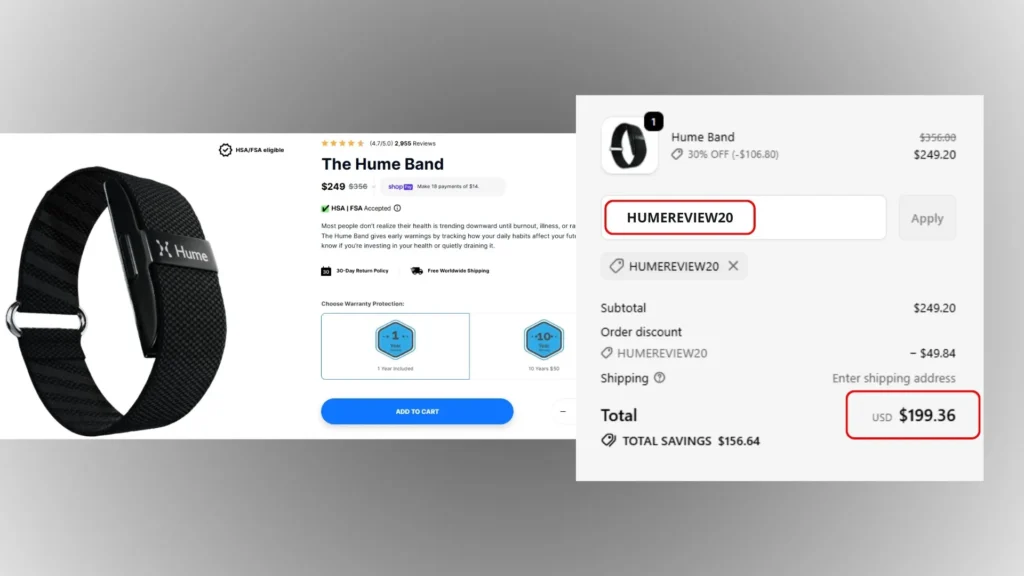
❓ Frequently Asked Questions — Hume Band vs Whoop
How much does the Hume Band cost?
The Hume Band’s regular price is $249, but with the HUMEREVIEW20 discount code, you can get it for $199. It’s a one-time purchase with no mandatory subscription.
Does the Hume Band need a subscription?
No. You can use the Hume Band for free and still access all the essential health metrics. The optional Premium plan ($8.99/month) provides extra AI-driven analytics and personalized recommendations, but you can cancel anytime.
How much does Whoop cost?
Whoop operates entirely on a subscription model, starting from $239/year and going up to $399/year depending on region and contract length. Over five years, that’s more than $1,000 in subscription fees.
Is the Hume Band more comfortable than Whoop?
Yes, in most cases. The Hume Band is lighter, smoother, and less noticeable on the wrist. The Whoop can feel bulky or scratchy, especially during hot weather or sleep.
Can I swim or shower with the Hume Band?
Yes. The Hume Band is water-resistant and can be worn while swimming, surfing, or showering. Just make sure it fits snugly before diving into water.
Does the Hume Band track sleep accurately?
Yes. It measures sleep duration, stages, and recovery quality, giving you clear insights into how well your body recharges overnight.
Does Whoop track more metrics than Hume Band?
Whoop offers more raw data and advanced metrics for professional athletes, but many users find it overwhelming. Hume Band focuses on clarity and usability, giving you the insights that actually matter without extra noise.
Who owns your data with each device?
This is one of the biggest differences. With Hume, you own your health data. Whoop retains and manages your data as long as you keep paying for your subscription.
Can the Hume Band detect health problems early?
Yes. Its algorithm detects subtle physiological changes in your heart rate variability, respiratory rate, skin temperature, and recovery patterns, which can help you spot potential health issues early.
How long does the Hume Band battery last?
The Hume Band lasts around 7 days on a single charge. I personally charge it for 20 minutes every three days while checking emails, and it stays full.
What about the Whoop’s battery life?
Whoop’s battery can last up to 14 days, though most users report around 5–7 days with normal usage. It also includes an on-the-go charging module, but it’s bulky and sometimes disconnects easily.
What kind of updates does the Hume app receive?
Hume’s app evolves constantly, and new updates are already planned to enhance tracking, interface design, and AI reports. You can even submit feedback directly in the app — every user suggestion helps shape future versions.
Is the Hume Band available worldwide?
Yes. The Hume Band ships internationally, and delivery usually takes 5–10 business days depending on location.
Is there a return policy or warranty?
Yes. Every Hume Band comes with a 30-day money-back guarantee and a 1-year warranty covering manufacturing defects.
Who is the Hume Band best suited for?
It’s ideal for athletes, professionals, health-conscious users or everyone who want to track longevity, metabolism, and recovery without getting lost in endless graphs.
If you’re still comparing Hume Band vs Whoop and want to dive even deeper into the Hume ecosystem — including subscription options, feature updates, and advanced metabolic insights — make sure to visit our complete Hume Band review. You’ll discover everything about how it works, why it’s built for longevity, and how to get the best offer directly from the official Hume Health website.
About The Author
Ethan Walker
Ethan Walker is a health professional and former professional athlete with more than a decade of experience in sports performance, rehabilitation, and longevity coaching. After competing at the elite level, he transitioned into helping others optimize their health using evidence-based training, recovery methods, and wearable technology.
His work combines first-hand athletic experience with a deep understanding of physiology, metabolic health, and digital health tracking. Ethan’s mission is simple: to translate complex science into clear, actionable insights so that athletes, biohackers, and everyday users alike can improve their performance, extend their longevity, and make smarter health decisions.


